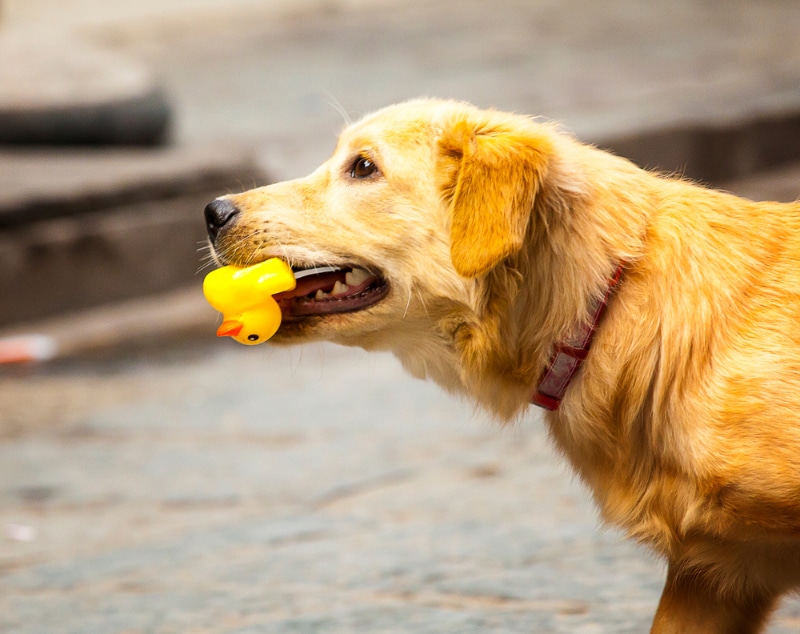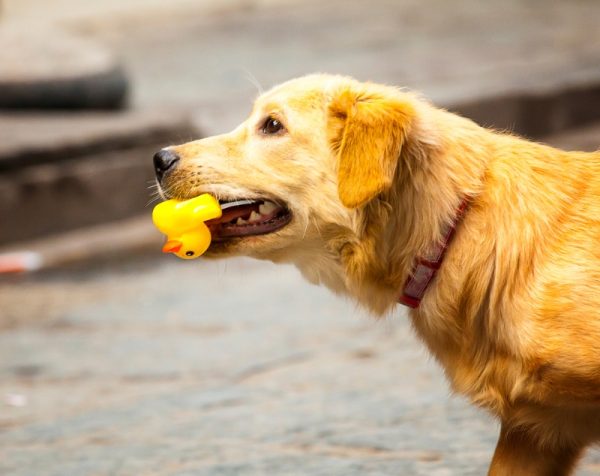Click to Skip Ahead
Our dogs do all sorts of things that we can’t explain, but love to watch. If you’ve noticed your dog casually carrying around their toy, it might seem strange. What are they thinking? What are they hoping for?
Much of that depends on body language and overall demeanor. If you want to decode this dog speak, we have a few reasons they might do this.
The 4 Reasons Your Dog Walks Around Holding a Toy
1. They Want to Play
If your dog is holding a toy, it could be the very first sign that they’re ready to play. They are prompting you by showing you an object they want you to throw or tug on.
If your dog gets excited when you go to reach for their toy and even tries to get away from you, this could indicate that they want you to chase them or have a fun time. Often, dogs will tease or taunt their owners and love engaging in this type of play.
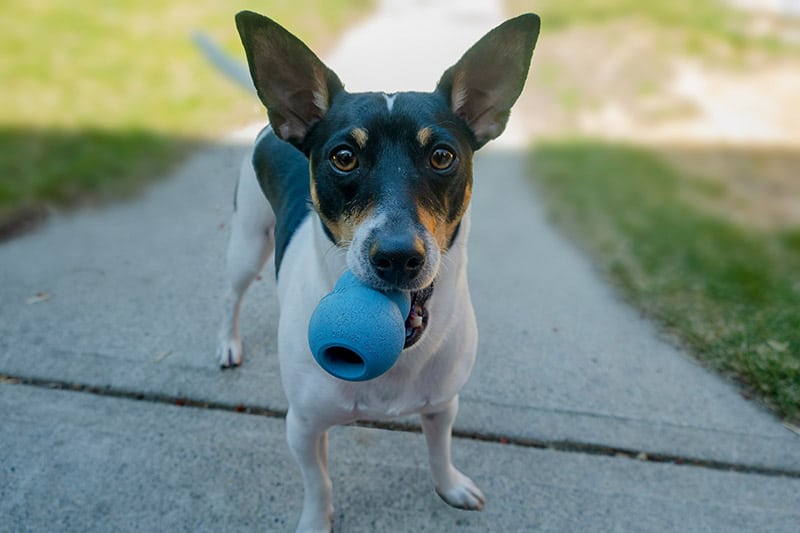
2. They Are Stressed Out
If your dog is feeling a little out of sorts or very stressed out, they might use the toy as a channel for anxiety because it makes them feel safe and secure. Often, if anxiety is the culprit, it will come with other telltale signs. Some dogs will exhibit undeniable signs of anxiety, while others have more subtle reactions.
Try to pay attention to your dog when they are holding their toy. Is there anything specific going on around the household? Do they seem unsure or a little uneasy? Answering these questions might give you insight into the underlying problem.
We highly recommend that if your dog’s anxiety does not seem to improve or is not environmental in nature, see your vet for advice. They can manage canine anxiety through a series of behavioral and sometimes medicinal means.
3. They’re Bored
If you’re someone that gets bored easily, you likely know what it’s like to need something to keep your attention. If your dog is meandering aimlessly around the house, having a toy in their mouth might make them feel like they’re doing something.
It can be a sign of boredom, so it might be time for a walk or a nice run around the backyard. You could even get in on it by playing a game of tug of war with them. That is completely up to you.
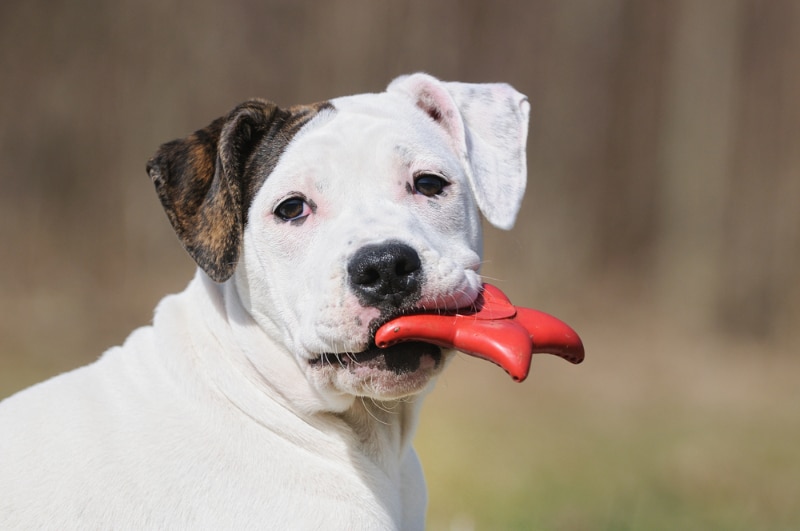
If you’re sitting there holding a big, juicy snack, you probably don’t want to share with people lingering around you. Can you blame your dog for feeling the same? If they have a toy that they absolutely love, they don’t want to leave it down for just anyone to grab.
If your dog has trouble playing well with others, it could be a sign that they are guarding their resources. Resource guarding can be problematic and should be addressed.
Some dogs will simply hold the toy in their mouth, and others might get very aggressive or even attack another dog if they think the toy will be taken. Resource aggression is a common behavioral complaint amongst pet owners and can require professional intervention.
Your dog must learn that certain behaviors are completely unacceptable and the toys are just toys. It can be a long, slow process, but many dogs improve over time. If your dog is only slightly possessive with their resources, you won’t have as much to worry about.
Toy Safety: Why It’s Vital
Dogs all have different activity levels. Some breeds are very hyper and destructive, while others are very mild-tempered and docile.
Toys can also break apart, break off, unravel, or otherwise. No matter how your dog snaps, crackles, or pops these toys, they have the potential to cause a major risk to your pet. Some dogs will eat anything, food related or otherwise! Others just can’t get enough of chewing, which can lead to accidental swallowing of parts.
That is why direct supervision is always advised when a dog has a toy of any kind. Even if you think your dog is trustworthy, you never know what could happen out of your sight. Accidental consumption of inedible items can warrant an emergency vet visit.
Ultimately, the type of toys you buy and the frequency in which you buy them depends greatly on your dog’s overall personality. If you have a particularly destructive dog, it might be challenging for you to find safe options for them to indulge in. But you should always dispose of toys when they are broken or start to come apart.
Here are some different types of toys and tips for buying safe toys for your dog.
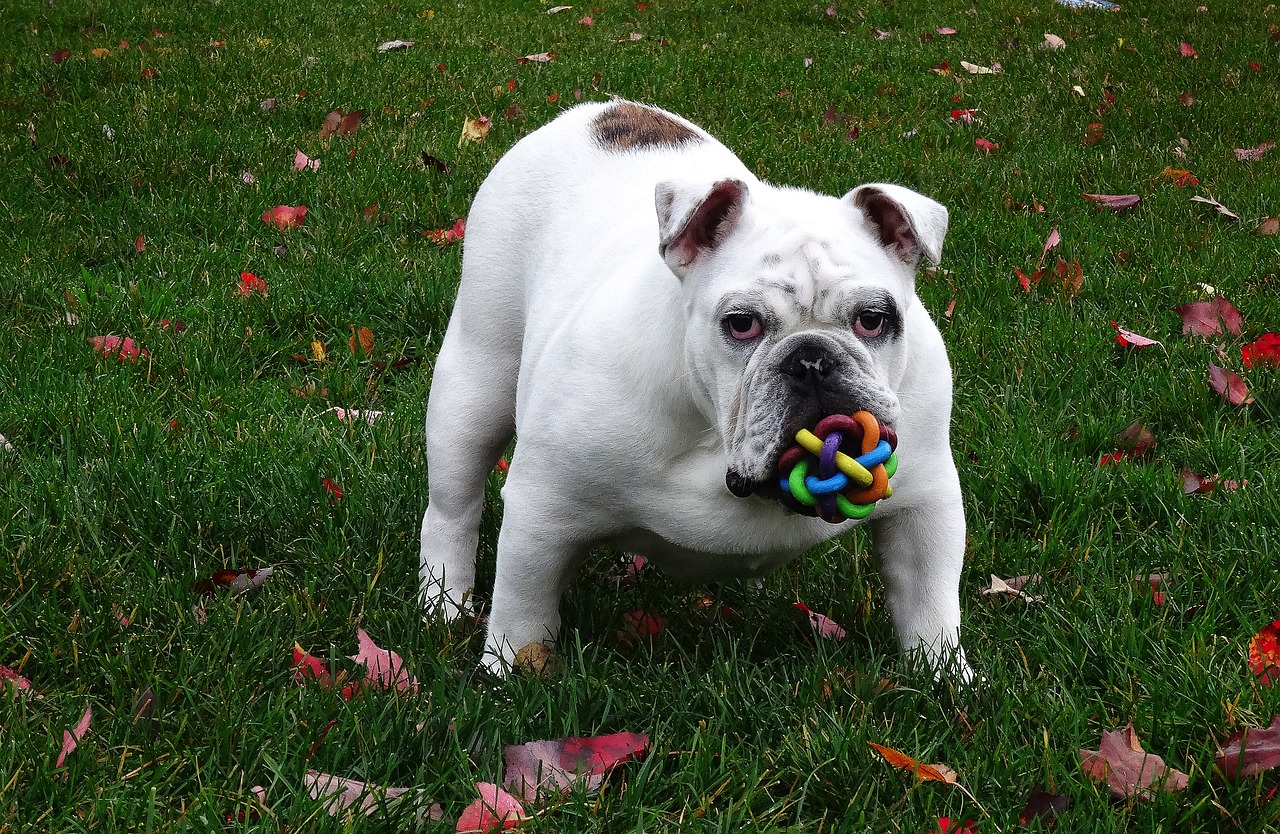
Soft Material
Toys with a soft material will come undone quite easily with little force. These toys are best for nonaggressive chewers and dogs with mild to moderate activity levels. If these toys have internal components, like squeakers or plastic bottles, you will want to keep an extra careful eye.
Noise Makers
Toys with noise makers inside can pose choking hazards or gastro-intestinal obstruction risk to dogs that chew very aggressively. If your dog can’t wait to rip something apart, it’s for the best to keep these types of toys away from them unless you’re directly supervising. Noisemakers can be a fun way to engage a dog in play, but they require constant attention.
If a toy containing a noise maker becomes ripped to the point that your dog can get the squeaker out, it’s best to throw out the toy and replace it with something else.
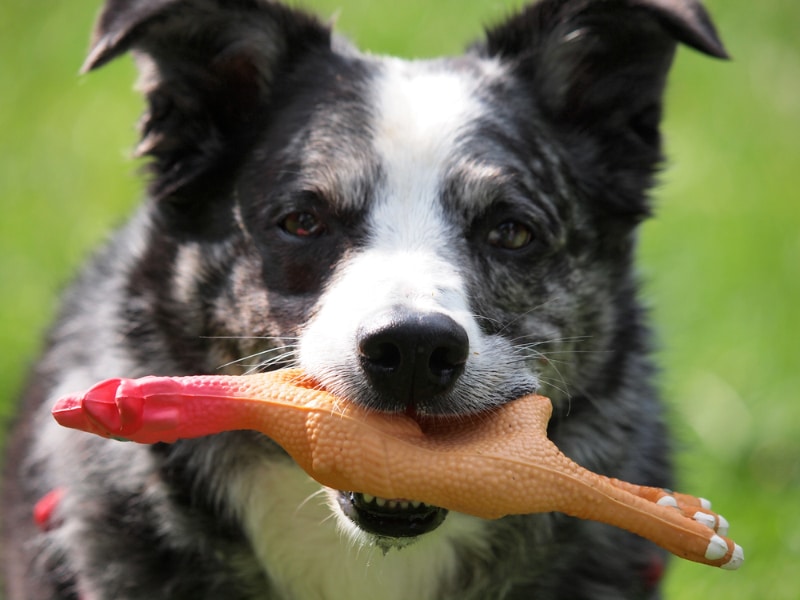
Rubber Balls/Kongs
Rubber balls and Kongs are often very good options for heavy chewers. These types of toys stay together very well and will not snap or break apart. Some rubber is not very durable, however. Always look at reviews to ensure you’re getting quality material.
Ropes
Ropes can be a lot of fun for dogs to play tug of war with. They will enjoy playing it with other dogs and with their humans! However, they can also be dangerous if they start coming apart. These small fibers can cause bowel obstructions, which could lead to veterinary emergencies.
Bones/Rawhides
Bones and rawhides are a popular choice for dogs to chew on. But that doesn’t necessarily mean that they’re good. Rawhides are not recommended, especially for heavy chewers. They can be swallowed whole by some dogs, and cause gastro-intestinal obstructions. Real bones can also pose the risk of obstruction as well as intestinal perforation if the bone splinters. Instead, look for alternatives that won’t splinter or split apart.
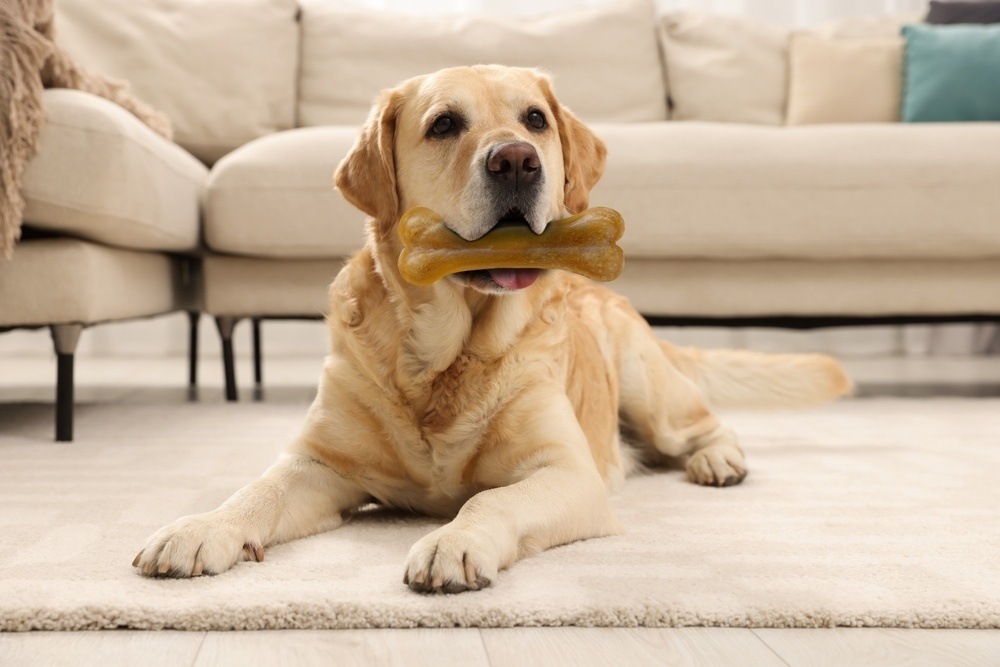
Conclusion
Now you understand that a dog holding a toy could mean a number of things. Ultimately, it will depend on their body language and the overall personality of your canine friend. If it seems like they want to engage in play, make sure you’re giving them proper enrichment and exercise.
If resource guarding or other behavioral problems seem to be problematic, address the issues accordingly, and don’t be afraid to seek professional guidance.
Featured Image Credit: malcolmthe, Shutterstock

